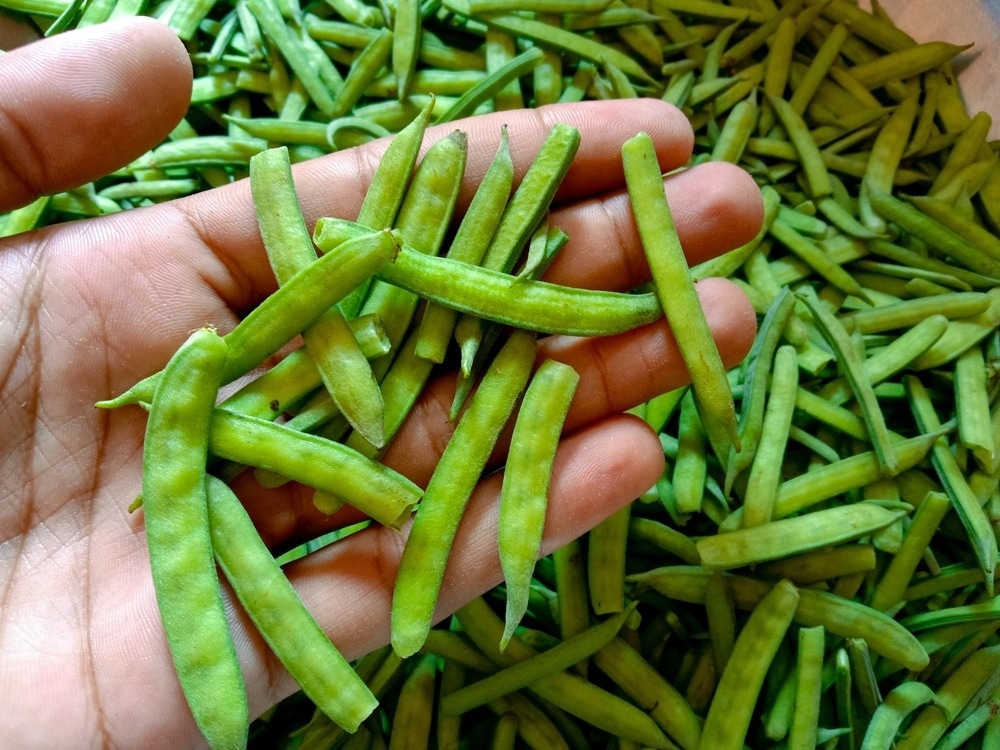Writing in the journal Materials Today: Proceedings, a team of scientists from Sant Longowal Institute of Engineering and Technology and Chandigarh University in India have investigated the thermal and sonochemical modification of guar gum to enhance the material’s properties and commercial application.

Study: Sonochemical and thermal modification of guar gum: A comparative analysis. Image Credit: Asimm Graphics/Shutterstock.com
Guar Gum
Guar gum is a natural polysaccharide, non-ionic in nature, which is present in the refined endosperm of cluster bean seeds. The structure of this commercially important natural material is made up of mannan and galactans units linked by glycosidic connections.
A linear chain polymer composed of galactomannan, water, protein, acid soluble ash, and fat, it is highly viscous in its soluble form due to its high molecular weight of around one million. It is highly soluble due to the presence of abundant galactose branches and achieves constant viscosity at low concentrations due to rapid hydration in water.
Guar gum has good emulsion, film-forming, and thickening capabilities which make it ideal for a range of applications in commercial sectors such as the pharmaceutical industry. Additionally, water phase management gives it good control over its rheological behaviors. The viscosity of this material is influenced by a number of factors including temperature, the presence of salts, and pH.
Whilst there have been some promising results in applying guar gum to a range of biomedical applications such as targeted drug delivery, its monotonous physiochemical features currently hinder the widespread application of this organic bioavailable and biodegradable non-ionic polysaccharide.
Chemically Modifying Guar Gum
The pharmaceutical and biomedical industry’s demand for high-performance biopolymers and their derivatives has driven research into chemically modifying guar gum for a variety of drug delivery applications. Additionally, the food industry has increased research into using guar gum for purposes such as food products with low glycemic indexes and biodegradable food packaging.
Chemical modification can provide guar gum and other natural polysaccharides with enhanced performance for specific applications. Several modification techniques have been explored to alter the chemical structure of guar gum. Sonochemistry and ultrasonic radiation techniques have been investigated in recent research.
Ultrasonication is particularly promising and has been already explored extensively in other industrial applications such as polymer technologies, organic synthesis, and electroplating. This technique significantly increases the reactivity of chemical reactions and differs from other methods which utilize energy sources such as heat and light in terms of pressure, duration, and energy.
A special homogenization process, during ultrasonic treatment the reaction system’s viscosity in polymers during crosslinking undergoes a rapid increase. Ultrasonication produces products with highly uniform and homogenous structures.
Thus far, whilst several studies have explored the modification of guar gum using various techniques and crosslinking agents, no research has been conducted into the modification of guar gum by ultrasonication. This represents a key research gap in the current body of literature.
The Study
In the study, the research team have aimed to fill this research gap by sonochemically modifying the structure of guar gum and characterize the modifications and properties of the final material.
Epichlorohydrin was employed as a crosslinking agent and the process was conducted in a high temperature ultrasonication environment. Biomaterial characterization was carried out using SEM, TGA, FT-IR, and DSC. Furthermore, swelling analysis was performed. Guar gum and crosslinking agents were sourced from Indian companies.
Study Findings
Some important observations were made in the study which can provide opportunities for future research, widening the commercial application of guar gum in the pharmaceutical and food industries.
The epichlorohydrin chemically modified guar gum possesses enhanced qualities compared to unmodified gum. SEM analysis revealed a disintegrated surface morphology, and TGA thermograms demonstrated a marginally reduced thermal stability compared to native guar gum.
The research highlighted the significant benefits of using ultrasonication to modify guar gum compared to thermal treatment methods. Thermally modified gum has less thermal stability than ultrasonically treated gum. A more uniform reaction is achieved using ultrasonication than heat treatments.
The novel modification process presented in the research produces a material with shear thinning behavior at higher shear rates. This is due to less interchain bonding, which was revealed by dynamic mechanical experiments.
Swelling analysis revealed that water swelling percentage drops at higher temperatures using sonochemical treatments. At higher temperatures, crosslink density rises, leading to less expansion and therefore limited water penetration and absorption. Thermally treated samples display no discernible swelling difference due to a possible lack of heat penetration during crosslinking, leading to a non-uniform structure.
Overall, the study has provided some important observations and categorizations of chemically crosslinked and sonochemically treated guar gum. Ultrasonication produces improved results, even at higher temperatures, making it an attractive treatment method for modified guar gum which can improve its properties and performance and consequent applications in the pharmaceutical and food industry.
Further Reading
Kumar, P., et al. (2022) Sonochemical and thermal modification of guar gum: A comparative analysis Materials Today: Proceedings [online] sciencedirect.com. Available at: https://www.sciencedirect.com/science/article/pii/S2214785322055158?via%3Dihub
Disclaimer: The views expressed here are those of the author expressed in their private capacity and do not necessarily represent the views of AZoM.com Limited T/A AZoNetwork the owner and operator of this website. This disclaimer forms part of the Terms and conditions of use of this website.